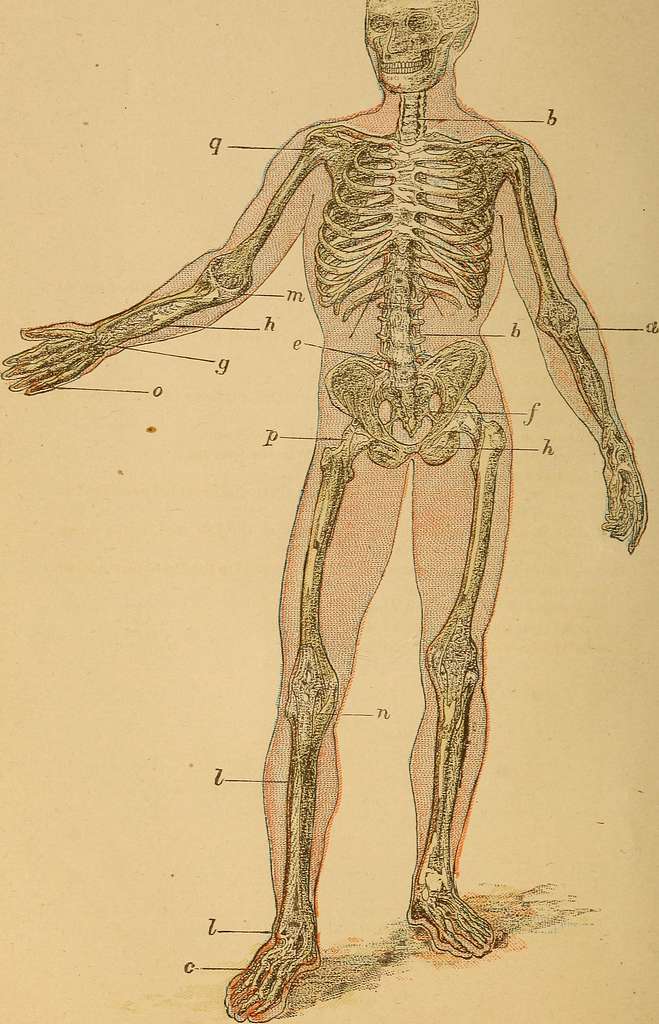Somatic Experiencing and Lifespan Integration
Myth: Somatic Experiencing is Just Another Relaxation Technique
One common misconception about Somatic Experiencing is that it is simply a relaxation technique, akin to practices like progressive muscle relaxation or guided imagery. While SE can indeed promote a sense of relaxation in the body, it is a much more comprehensive approach to trauma healing and nervous system regulation.
Unlike purely relaxation-based techniques, SE works directly with the physiological effects of trauma, including the dysregulation of the autonomic nervous system and the storage of survival energy in the body. Through practices like titration, pendulation, and the completion of survival responses, SE helps to release this stored energy and restore the body’s natural capacity for self-regulation.
SE also places a strong emphasis on building internal resources and resilience, rather than just inducing relaxation. By helping individuals to cultivate a felt sense of safety, connection, and vitality in the body, SE lays the foundation for lasting trauma resolution and post-traumatic growth.
We have a Somatic Experiencing Therapist @ Taproot Therapy Collective. Click here to schedule.
Somatic Experiencing Series:
Misconception: Somatic Experiencing Requires Reliving Traumatic Memories
Another common misconception about Somatic Experiencing is that it requires individuals to relive or re-experience their traumatic memories in detail. This is not the case. In fact, SE takes a distinctly different approach to trauma processing than many traditional talk therapies.
In SE, the focus is on working with the physiological effects of trauma in the present moment, rather than on rehashing the details of the past. While memories and emotions related to the trauma may arise during the course of therapy, the emphasis is on tracking the bodily sensations and responses that accompany these experiences, rather than on telling the story of what happened.
This body-based approach can be particularly helpful for individuals who find it difficult or overwhelming to talk about their trauma directly. By working with the felt sense of the experience in the body, rather than just the cognitive or emotional aspects, SE can help to gently process and integrate traumatic experiences without the risk of re-traumatization.
FAQ: How Long Does Somatic Experiencing Treatment Take?
The length of Somatic Experiencing treatment can vary widely depending on the individual and the nature of their trauma. Some individuals may experience significant relief from their symptoms after just a few sessions, while others may require longer-term treatment to fully process and integrate their experiences.
In general, SE is a gradual and titrated approach to trauma healing, with a focus on building resources and resilience over time. Most individuals work with an SE practitioner for several months to a year or more, with sessions typically occurring on a weekly or bi-weekly basis.
It’s important to note that the goal of SE is not just symptom relief, but a deeper level of nervous system regulation and embodied transformation. This process can unfold over time, as individuals learn to build new patterns of response and relationship to their experiences.
Ultimately, the length of treatment will depend on each individual’s unique needs, goals, and pace of healing. An experienced SE practitioner can help to assess progress and adjust the course of treatment as needed.
FAQ: Can Somatic Experiencing be Done Online or Over the Phone?
While Somatic Experiencing is traditionally done in person, with the therapist and client working together in the same physical space, it is possible to adapt the approach for online or phone-based sessions.
Many SE practitioners now offer remote sessions, using video conferencing platforms or phone calls to connect with clients. While this format may not allow for the same level of physical attunement and co-regulation as in-person sessions, it can still be a highly effective way to work with trauma and build nervous system resilience.
In remote SE sessions, the practitioner may guide the client through self-touch exercises, grounding and centering practices, and body awareness meditations. The therapist may also use verbal cues and prompts to help the client track their sensations and responses, and to titrate between activation and resource.
While online or phone-based SE may not be suitable for everyone, particularly those with severe dissociation or complex trauma, it can be a valuable option for individuals who cannot access in-person treatment due to geography, mobility issues, or other constraints. As with any therapeutic approach, the most important factor is finding a skilled and attuned practitioner who can tailor the work to the individual’s needs and circumstances.
Myth: Somatic Experiencing is Only for People with Severe Trauma
A final myth about Somatic Experiencing is that it is only suitable for individuals with severe or complex trauma, such as combat veterans, survivors of sexual assault, or victims of prolonged childhood abuse. While SE can indeed be highly effective for these populations, its applications are much broader.
In fact, SE can be beneficial for anyone who has experienced stress, overwhelm, or dysregulation in their nervous system, whether from a single incident or from the cumulative effects of life’s challenges. This might include experiences like a car accident, a difficult childbirth, a medical procedure, a natural disaster, or even a period of intense work or relationship stress.
SE is ultimately about building resilience and the capacity for self-regulation in the face of life’s inevitable ups and downs. By learning to track and modulate one’s physiological responses, to build inner resources and supports, and to complete thwarted survival responses, individuals can develop greater flexibility, adaptability, and ease in meeting whatever comes their way.
In this sense, SE is not just a trauma therapy, but a life skills approach that can benefit anyone seeking to live with greater embodiment, vitality, and connection to self and others. Whether as a standalone treatment or as a complement to other forms of therapy or personal growth work, SE offers a powerful set of tools for navigating the challenges and opportunities of the human experience.
What is Life Integration in the Context of Somatic Experiencing?
Life integration, in the context of Somatic Experiencing, refers to the process of translating the insights, skills, and experiences gained in therapy into daily life. It involves embodying the principles of SE in a way that supports ongoing healing, resilience, and personal growth.
Life integration is a crucial aspect of the SE approach, as it recognizes that healing from trauma is not just about resolving past experiences, but also about creating a new, more vibrant and connected way of living. It emphasizes the importance of building a strong foundation of inner resources, self-regulation skills, and body awareness that can support individuals in navigating the challenges and opportunities of daily life.
The Role of Embodiment in Life Integration
Embodiment is a central concept in Somatic Experiencing and plays a key role in life integration. Embodiment refers to the felt sense of being fully present and connected to one’s physical, emotional, and sensory experiences in the moment.
In SE, embodiment is cultivated through practices such as grounding, centering, and tracking sensations, which help individuals to develop greater body awareness and self-regulation capacity. As individuals become more embodied, they are better able to navigate stressful or challenging situations with greater ease and resilience.
Embodiment also supports life integration by helping individuals to make choices and take actions that are aligned with their authentic needs, values, and desires. When one is disconnected from their bodily experiences, it is easy to get caught up in patterns of thinking or behavior that may not serve one’s true well-being. But when one is able to tune into the subtle cues and messages of the body, it becomes possible to make more authentic and nourishing choices in all areas of life.
Developing Resilience Through Somatic Experiencing
Resilience is the capacity to bounce back from adversity and to adapt to changing circumstances with flexibility and grace. It is a key outcome of successful life integration and is actively cultivated in Somatic Experiencing.
SE builds resilience by helping individuals to strengthen their inner resources, such as a sense of grounding, centering, and safety in the body. Through the process of titration and pendulation, individuals learn to gradually expand their window of tolerance, building the capacity to handle greater levels of stress and intensity without becoming overwhelmed.
Resilience is also fostered through the completion of survival responses, such as fight, flight, or freeze. By safely releasing the stored energy of these responses, individuals can free up vast reserves of energy and vitality that were previously bound up in trauma. This energy can then be channeled into more creative, expressive, and life-affirming pursuits.
Somatic Experiencing and Post-Traumatic Growth
Post-traumatic growth refers to the positive psychological changes that can occur as a result of the struggle with highly challenging life circumstances. While trauma can have devastating effects, it can also be a catalyst for profound personal transformation and growth.
Somatic Experiencing supports post-traumatic growth by helping individuals to process and integrate traumatic experiences in a way that allows for new meanings, perspectives, and possibilities to emerge. By working with the body’s innate wisdom and healing capacity, SE can help individuals to not only survive trauma but to thrive in its aftermath.
Post-traumatic growth in SE may involve a deepening of relationships, a greater appreciation for life, an increased sense of personal strength and self-trust, a re-evaluation of priorities and values, and an expanded sense of meaning and purpose. By embracing the full spectrum of one’s experiences, including the painful and the positive, individuals can craft lives of greater richness, resilience, and authenticity.
Case Studies: Success Stories of Life Integration Through Somatic Experiencing
To illustrate the power of life integration through Somatic Experiencing, consider the following case studies:
Sarah, a survivor of childhood sexual abuse, had struggled for years with chronic depression, anxiety, and dissociation. Through SE, she began to develop a greater sense of safety and presence in her body, and to release the stored energy of her trauma responses. As she integrated these experiences, Sarah found herself able to set healthier boundaries in her relationships, pursue her creative passions, and connect with a deep sense of spiritual meaning and purpose.
John, a veteran with PTSD, had been plagued by flashbacks, nightmares, and hypervigilance since returning from combat. In SE therapy, he learned to track his bodily sensations and to pendulate between activation and resource. Gradually, he was able to complete the fight and flight responses that had been frozen during his trauma, leading to a profound sense of relief and empowerment. As he integrated these shifts, John found himself able to be more present with his family, to pursue new career opportunities, and to engage in his community with greater ease and joy.
Maria, a survivor of a serious car accident, had developed chronic pain and a fear of driving. Through SE, she worked to gently titrate her fear response and to build internal resources of safety and resilience. As she released the physical and emotional shock of the accident, Maria’s pain began to subside and her confidence returned. She was able to resume driving and to re-engage in the activities that brought her fulfillment and joy, with a renewed sense of gratitude and perspective.
These case studies demonstrate the transformative potential of life integration through Somatic Experiencing. By working with the body’s natural healing mechanisms and building a foundation of inner resources, individuals can not only overcome the debilitating effects of trauma but can go on to lead lives of greater resilience, connection, and creativity.
We have a Somatic Experiencing Therapist @ Taproot Therapy Collective. Click here to schedule.
Somatic Experiencing Series:
Bibliography
Brom, D., Stokar, Y., Lawi, C., Nuriel-Porat, V., Ziv, Y., Lerner, K., & Ross, G. (2017). Somatic experiencing for posttraumatic stress disorder: A randomized controlled outcome study. Journal of Traumatic Stress, 30(3), 304-312.
Heller, D. P., & Heller, L. (2004). Somatic experiencing in the treatment of automobile accident trauma. U.S. Association for Body Psychotherapy Journal, 3(2), 42-52.
Levine, P. A. (2010). In an unspoken voice: How the body releases trauma and restores goodness. North Atlantic Books.
Levine, P. A. (1997). Waking the tiger: Healing trauma: The innate capacity to transform overwhelming experiences. North Atlantic Books.
Payne, P., Levine, P. A., & Crane-Godreau, M. A. (2015). Somatic experiencing: Using interoception and proprioception as core elements of trauma therapy. Frontiers in Psychology, 6, 93.
Types of Therapy

























0 Comments